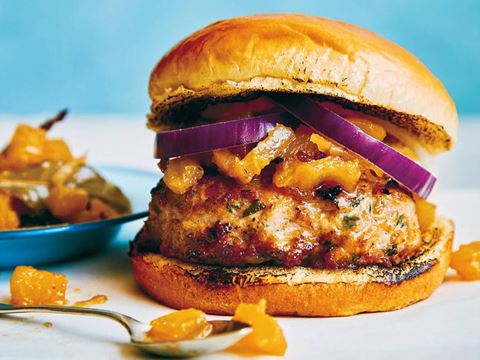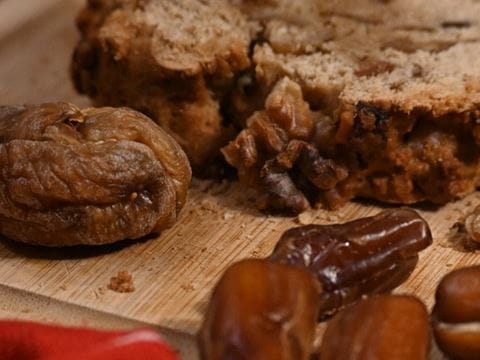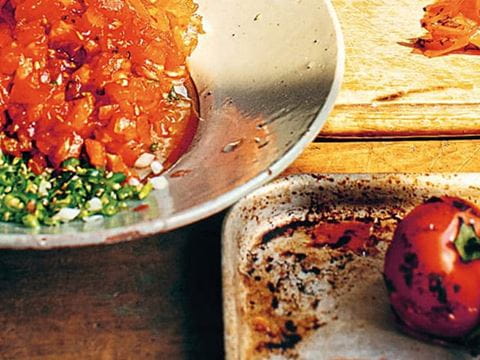
Cracked Wheat and Tomato Kibbeh Recipe
- Recipe
Reading time:3min
Written by Shane Delia. Photographed by Rob Palmer. Author photo by Matt Russell.
Talk about my idea of heaven ...
Sitting on the beach with my feet in the sand, listening to sounds of Lebanese pop music drifting through the air, watching children play in the water, eating simply cooked line-caught fish with this beautiful tomato kibbeh. I don't how you could top it.

Ingredients
Cracked Wheat and Tomato Kibbeh
Serves 4
1/2 cup (265 grams) fine bulgur
1 large tomato
1/2 red onion
1 heaped tablespoon dried mint
1 teaspoon smoked paprika
Pinch cayenne pepper
1 heaped tablespoon red pepper paste
2 1/2 tablespoons pomegranate
10 mint leaves, finely chopped
10 cilantro leaves, finely chopped
Drizzle of olive oil
Toppings
1 radish, thinly sliced
1 candy beet (or other heirloom beet), thinly sliced
1 cocktail onion, thinly sliced
Handful arugula leaves
1/2 cup (60 grams) Greek yogurt
Handful small heirloom tomatoes, halved
Drizzle extra-virgin olive oil
Soak the bulgur in a bowl of hot tap water for 30 minutes or until soft. Drain.
Using a food processor, grind the bulgur, tomato and onion in an even consistency. Alternatively, use a grinder. Transfer the bulgur mixture to a bowl and add the remaining ingredients, tasting as you go to balance the flavors; if one flavor dominates, adjust by adding more of the other ingredients. Cover with plastic wrap and refrigerate until required.
Place the radish, beet, onion and arugula into separate bowls of iced water and leave to crisp for about 10 minutes. Drain on paper towels.
Arrange the bulgur mixture on a serving plate and add a few dollops of yogurt. Top with the thinly sliced vegetables, arugula and tomatoes. Drizzle with olive oil and serve immediately.
Reprinted with permission from:
East/West: A Culinary Journey Through Malta, Lebanon, Iran, Turkey, Morocco, and Andalusia
Shane Delia. Interlink Books, 2017. InterlinkBooks.com
You may also be interested in...

Flavors: Chicken Kabab Burgers
Like the iconic bun kabab of Karachi in Pakistan or Hyderabad in India, a spicy kabab inside a bun is a popular street food in certain regions of the Indian subcontinent.
A Loaf to Love: Sally Butcher’s Date and Fig Bread Recipe
A take on this date-and-fig bread-loaf recipe from the recent 10th-anniversary reissue of Sally Butcher’s New Middle Eastern Street Food does more than just satiate our sweet tooth. It offers a guide for savoring the simpler things in life.
Cook Bangladesh’s Spicy Tomato Bhorta by Chef Asma Khan
Bhorta or bharta is a generic term used in Bengal to describe anything that has been ground, pounded or chopped into very small pieces. It is a side dish almost like a relish, which is commonly eaten with rice and lentils.
